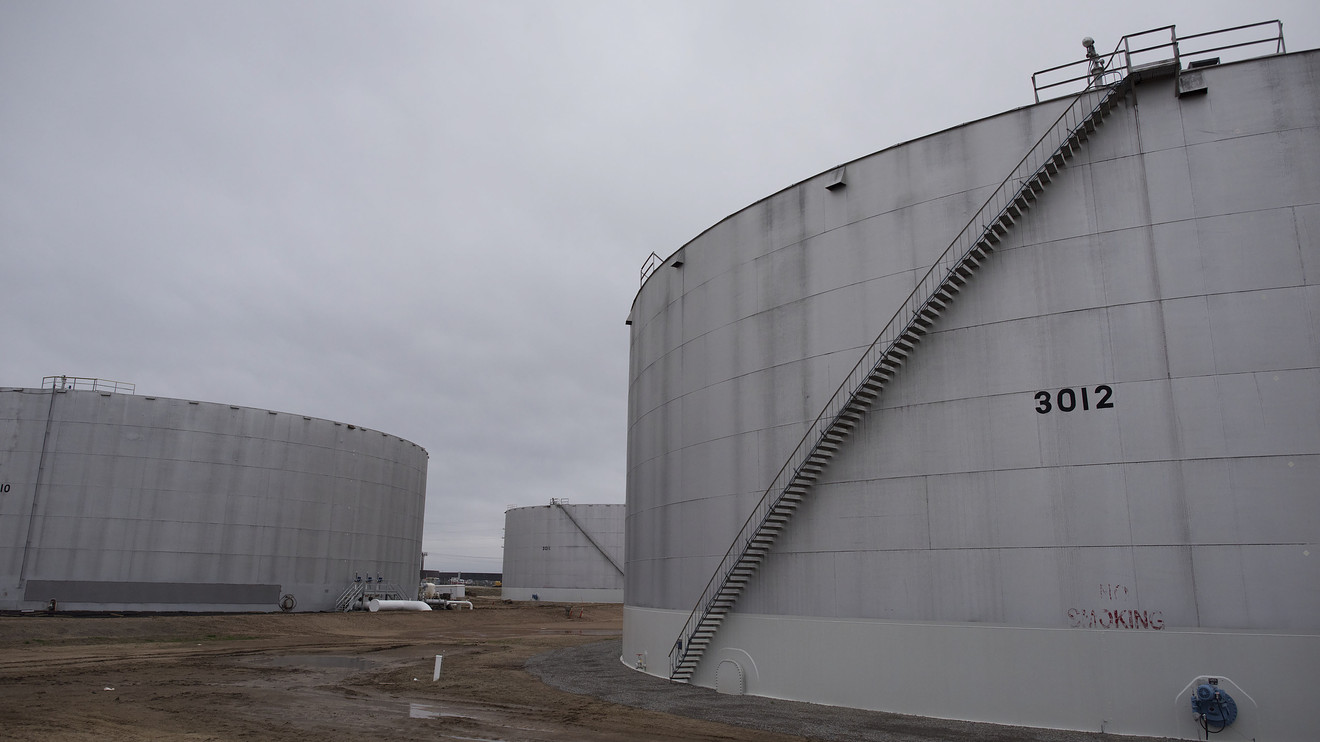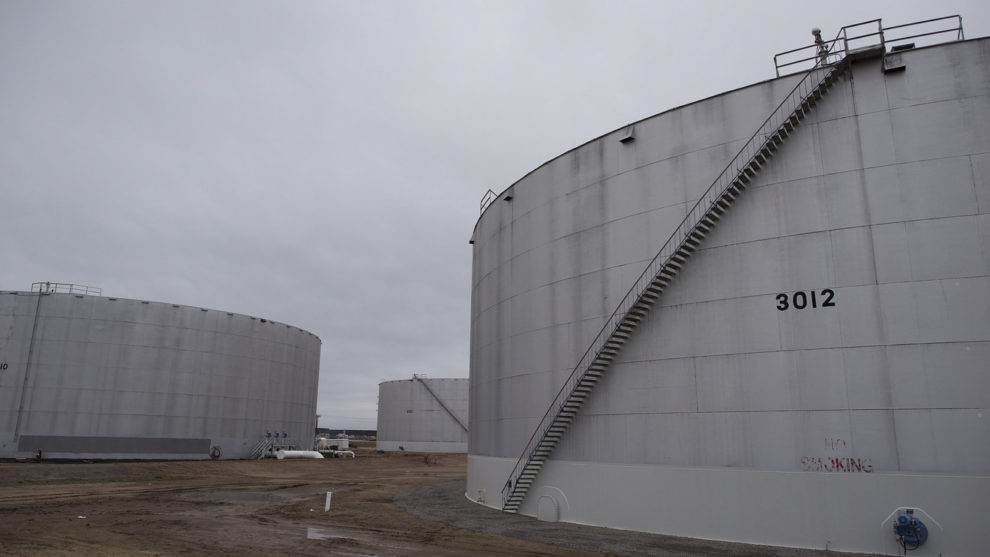
The nearby May futures contract for U.S. crude oil plunged on Friday to its lowest settlement price since early 2002 as it nears expiration, reflecting fears over a global glut and tight storage space.
West Texas Intermediate contracts for later delivery trade at much higher prices than the front-month May contract, which expires at end of Tuesday’s session.
“There is significant disparity between prompt price movements and contracts only a few months further down the forward curve,” with the July WTI contract trading around $12 higher than the May contract, said Robbie Fraser, senior commodity analyst at Schneider Electric.
“The opening of this increasingly steep contango is a clear sign of a physical market under heavy stress, with light oil storage in the U.S. filling up at a record pace and oil flows routing back into the Cushing,[Okla.] hub,” he said in a market update.
West Texas Intermediate crude for May delivery CLK20, -8.75% lost $1.60, or 8.1%, to settle at $18.27 a barrel on the New York Mercantile Exchange after trading as low as $17.31. The intraday price was the lowest front-month intraday level since November 2001 and the settlement was the lowest since January 2002, according to Dow Jones Market Data. For the week, the contract was down roughly 19.7% from last Thursday finish. Last Friday was a holiday for the market.
The June WTI contract CLM20, -1.60% lost 50 cents, or 2%, to $25.03 a barrel, revealing a steep contango curve—a situation in which deferred contracts trade above the nearby.
Read:Oil market in ‘super contango’ underlines storage fears as coronavirus destroys crude demand
The move “ highlights the lack of storage availability as long positions rush to get out instead of risking taking delivery of barrels they can not store,” said Ole Hansen, head of commodity strategy at Saxo Bank.
“This development highlights the challenge to all those investors who have bought into oil this month purely from the narrative that it is historically cheap,” he said. “It is cheap for a reason and the very elevated contango highlights a very oversupplied market where production needs to be reduced in order to avoid running out of storage.”
Hansen said the near-term risk is that the June WTI contract drops back toward $20 a barrel “for the same reasons that the expiring May has collapsed…not enough demand and to high production.”
Meanwhile, the global benchmark, Brent crude for June delivery BRNM20, +0.99% managed to extend gains from Thursday, to climb 26 cents, or 0.9%, to $28.08 a barrel on ICE Futures Europe. It fell 10.8% for the week.
The divergence between Brent and WTI results from the view that Europe is ahead of the U.S. in terms of the timeline for reopening its economy as the coronavirus epidemic abates. Some countries in Europe are starting to lift restrictions while the U.S. still seems to be some weeks away from that, said Marshall Steeves, energy markets analyst at IHS Markit. “Lifting restrictions on travel and commerce ought to increase demand for petroleum and products.”
Meanwhile, the WTI price action also indicates the market expects massive production cuts in response to price by U.S. producers to reduce the surpluses, said Eugen Weinberg, commodity analyst a Commerzbank, in a note.
In addition to voluntary cuts, there is also the possibility the Railroad Commission of Texas could move as early as next week to limit output in the state, though such a move could be very difficult to implement for technical and legal reasons, Weinberg said.
The commission, which regulates the oil-and-gas industry in the state, held a hearing earlier this week to discuss a potential cut of 20% in Texas oil output, or about 1 million barrels per day. It is expected to take up the matter again at a meeting on April 21.
A plan reportedly being considered by the Trump administration that would see the government pay producers to keep crude in the ground may be more promising, said Weinberg.
However, Manish Raj, chief financial officer at Velandera Energy, said “voluntary production cuts are rampant among all U.S. producers,” with the cuts “driven purely by economics, not by government order.”
On Friday, Baker Hughes BKR, +3.49% reported that the number of active U.S. rigs drilling for oil dropped by 66 to 438 this week. That marked a fifth straight weekly declines and suggests that oil production is headed for a fall.
The recent agreement to reduce production between the Organization of the Petroleum Exporting Countries and its allies, collectively known as OPEC+, as well as voluntary G-20 output cuts “may gradually rebalance the market through the end of the year,” Raj said. But “all production cuts are gradual and future dated,” while the “collapse in demand is immediate with existing production finding no buyers on the spot.”
Back on Nymex, front-month petroleum product futures climbed, with May gasoline RBK20, +2.68% up 0.8% at 71.07 cents a gallon, ending over nearly 5% higher for the week. May heating oil HOK20, +1.97% added 1.1% to 95.63 cents a gallon, though saw a weekly decline of 1.7%.
May natural gas NGK20, +4.21% rose 4% to $1.753 per million British thermal units, trading up almost 1.2% for the week. Analysts have said that oil output cuts would also lead to output declines in natural gas, which is associated with oil production.
Barbara Kollmeyer contributed to this article.











Add Comment